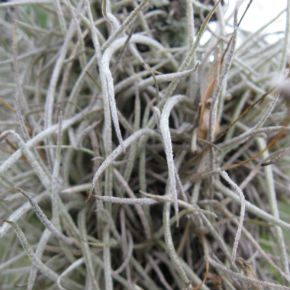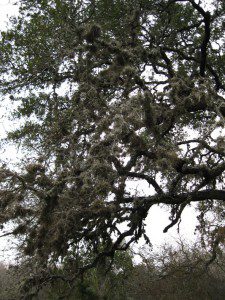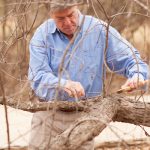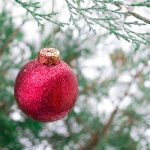Before you banish the ball moss from your trees, know this: it is not a parasite. Ball moss does not feed on your trees, but only uses them for structural support.
‘Tis the season for stories — many filled with joy, humor and maybe a little “extra” for “flavor.” Stories of ball moss are like that. Entertaining but suspect. Here is the truth about ball moss.
Tillandsia recurvata is a small, non-descript plant commonly found in Southwest Texas. Ironically, although this plant benefits the environment by “fixing” atmospheric nitrogen, much like alfalfa and clover, it is despised and eagerly eradicated. Most of us know this plant of ill repute as ball moss.

Ball moss is not a moss, but a true plant with flowers and seeds. A member of the Bromeliad family, which includes the pineapple, ball moss is an epiphyte.
Epiphytes attach themselves to limbs, tree trunks, power lines, picket fences and many other structures with their pseudo-roots. These are not true roots because they do not absorb water and minerals; they merely attach the plant to an aerial structure for support. Therefore, since epiphytes do not pilfer nutrients and water from their host, they are not parasites.
Because ball moss survives by absorbing water and nutrients from the surrounding atmosphere through its leaves and stem, it prefers sites that have little air movement and high relative humidity. The growth habit and thick canopy of the live oak provides an ideal habitat.

Ball moss on live oak.
Live oaks develop a type of canopy which is often described as a “monolayer,” that is, very thick on the exterior but quite open in the interior. This results in a low light, high humidity situation ideally suited for ball moss. As a result, ball moss is most often found on the dead interior branches of old live oaks. However, it is erroneous to believe that ball moss kills these interior branches. These branches die for the very same reason that the ball moss prefers the interior canopy — lack of sunlight. Likewise, branches which seem to be “smothered” by ball moss would inevitably die as a result of changing light intensity and tree physiology.
For those who simply cannot stand the thought of ball moss being benign or worse, of possessing potential benefits, the recommended method to reduce ball moss “infestation” is to prune all the deadwood and thin the canopy every five years. You can also spray with a fungicide, Kocide 101, for two consecutive springs.
While these practices will not remove all the ball moss, they will benefit the tree and make you feel better. Still, you can laugh when someone says ball moss kills trees. And laughter is always a good thing during the holidays.




